Everything about landscape design, from developing a plan to properly laying out the garden
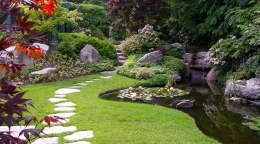
With increasing interest in gardens and parks, there are more and more people interested and those who want to know everything about landscape design. And this is not surprising, since this is quite an interesting and remarkable phenomenon.
Content:
- Everything about landscape design, what is meant by this concept
- What is included in landscape design
- Types of landscape design
- Landscaping for Beginners
- Point one - creating a project
- Point two - direct preparation of the territory
- Point three - engineering and construction activities
- Point four - installation of architectural forms, decor and landscaping
- Types of gardens in landscape design, the most popular styles
- In what case is it more rational to contact a landscape design specialist?
Everything about landscape design, what is meant by this concept
Modern landscape design combines three areas: botany, architecture with design and philosophy. In the process of arrangement, first of all, a diagram of the future composition is drawn up, followed by the selection of components. At the same time, the design of the site is subject to a strict style that complies with the rules of landscape design.
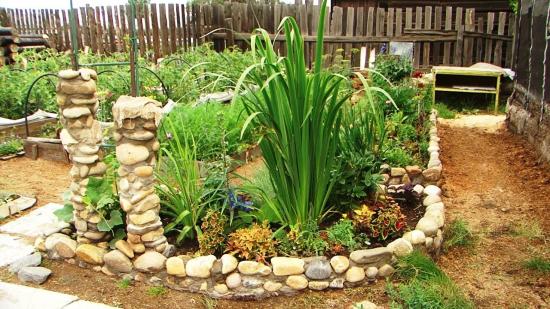
Depending on the direction, the structural components may be different details, but the basis is a garden, a lawn with paths, flower beds, gazebos, fountains and shrubs.Additionally, architectural compositions and alpine slides can be used.
Thanks to a correctly drawn up design project, you can not only improve the site, but also change it beyond recognition. In a place where the plants are chosen correctly and they do not embarrass each other, you can relax not only physically, but also mentally.
Everything about landscape design and the principles of creating a minimalist version with your own hands - in the video:
What is included in landscape design
Under the general name, there are a number of components used when working as a landscape designer.
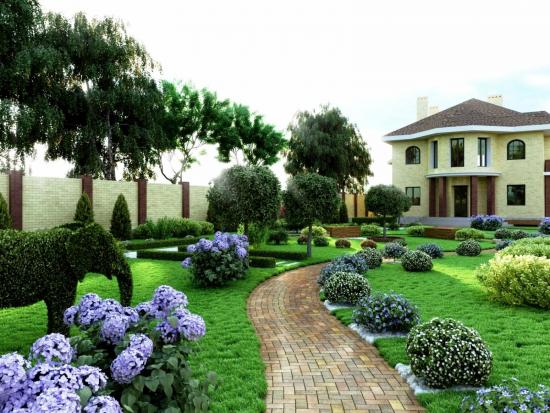
The main ones are those indicated in the table.
| Garden | Decorative, fruit or combined. Depending on personal or stylistic wishes, plant species may vary |
| Alpine coaster | They are built from natural stone and coniferous vegetation. Particularly successful is the placement of an alpine slide next to a pond, in a well-lit area protected from drafts. |
| Gazebos, sculptures, canopies and benches | Components of garden micro-architecture. They perform both practical functions - sun protection and a place to rest, as well as decorative ones. |
| Reservoirs | They can be represented by fountains, small ponds or pools. They perform two functions at once - moistening the environment and bringing aesthetic pleasure. However, it is important to take into account that a pond needs to be looked after just as thoroughly as a lawn. |
| Lawns | They differ in growth rate and density, requiring regular fertilizing and haircuts. Since grass grows very quickly, a lawn mower is indispensable. |
| Vertical gardening details | Lianas, grapes, hops and other climbing species that decorate hedges, walls or fences.Often used to hide bad areas |
| Paths | They play the direct role of a path connecting different areas, which is why they deserve special attention, since they must fit organically into the interior. To design a path, it is important to take into account the soil profile and structure of the earth. The path can be covered with gravel or tiled |
| Flower beds in the form of individual flower beds, borders, mixed plantings or ridges | They are used to focus attention on any moment of the landscape with bright floral colors. |
There are many options for combining these components to create unique garden, which will fully meet the wishes of the owner.
Types of landscape design
Depending on the characteristic features, there are three types landscape design: landscape, regular and Japanese. They differ in characteristics and requirements, which appear at the design stage.
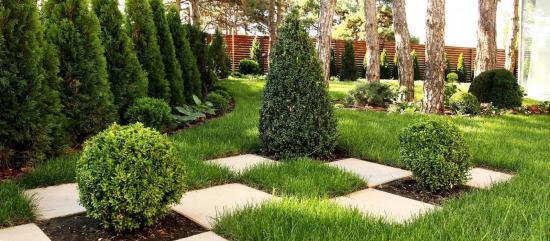
Landscape
Characterized by maximum compliance with the natural topography. In this type, there are no symmetrical plantings and flower beds; at first glance, one may generally get the impression that a person did not have a hand in arranging the site, but this is not at all the case.
In landscape-type projects, asymmetrical flower beds predominate and shrubs and trees have natural contours; topiary is not applied to them.
Landscape projects emphasize naturalness not only by the appearance of the natural asymmetry of plants, but also by the confusion of paths. Even the seating area is often made of wood for maximum natural realism.
Regular
This is the exact opposite of a landscape view.It is distinguished by the severity of its forms, symmetry of lines and harmony of elements. It looks most successful in park areas and on large garden plots.
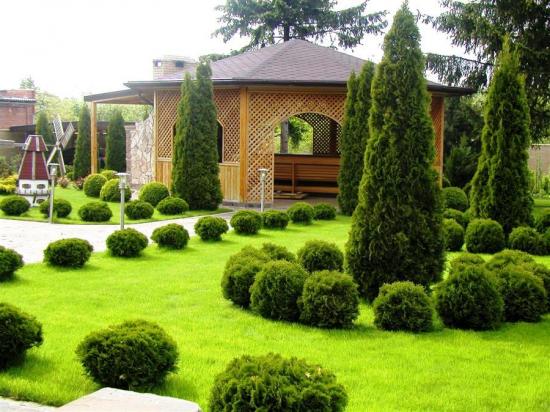
Each part of a regular garden corresponds to a strict and clear geometric shape.
Another distinctive feature is the presence of flower beds with clearly designed flower arrangements.
The paths necessarily form a complex network with a large number of intersections and sharp turns. This type is characterized by a large number of sculptures, long alleys, arches and rotundas.
Japanese
This style is based not on a scientific approach, but on Eastern philosophy. It is not surprising that this species is strikingly different from others.
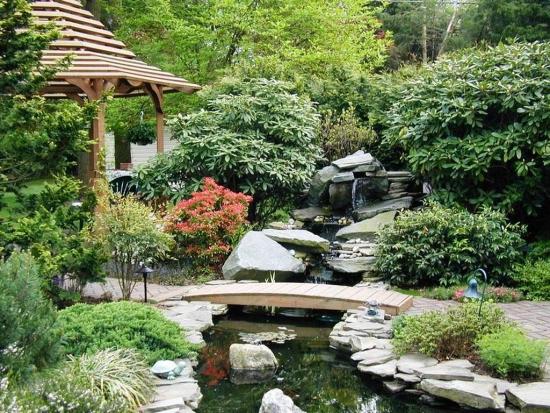
The main components are: stone, which symbolizes spiritual perseverance, water - a symbol of the transience of human existence, and wood, symbolizing constant change and improvement.
In a Japanese garden, these elements must be arranged harmoniously, creating favorable conditions for meditation and contemplation.
The basis is sute-ishi, or the art of correctly placing stones on the site. To create a truly philosophical composition, you need to carefully select stones by color, size and shape.
In addition to stones, ponds are an important component, but a variety of ornamental plants, on the contrary, is not desirable.
Landscaping for Beginners
The basics of creating a project and working with it are taught in specialized universities and, if you do not have the appropriate education, you will have to strictly follow a number of points.
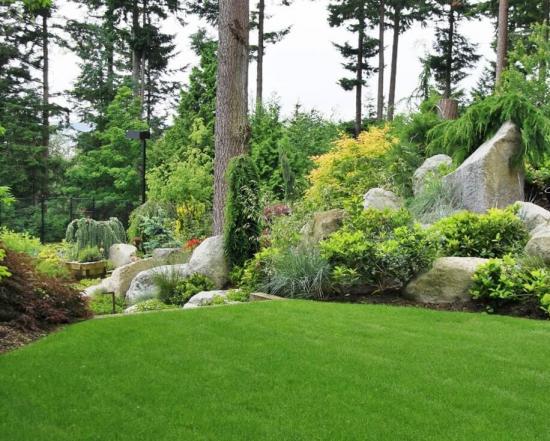
Precise adherence to the sequence of work stages will help a beginner not to make a mistake in the first task, but to complete it with the highest quality possible.
Point one - creating a project
First of all, you need to decide what the result should be, what species it belongs to and what kind of breeds you would like to see in it.
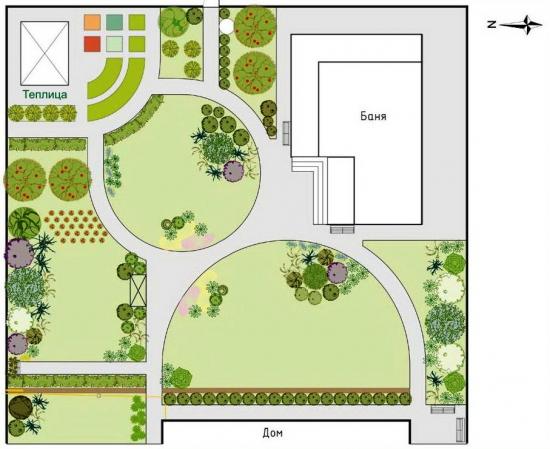
Depending on the chosen style, roughly plan where and what will be placed, what the main idea will be: will it be a place for peace and meditation, a labyrinth, or a place where you can barbecue and play with children.
Next you need to pay attention to such points as:
- Creating a sketch plan that will make it possible to see the design in full. To compile it, it is necessary to measure the area, making marks on the map with appropriate preservation of scale. Here you can schematically depict the planned location of paths, trees, a pond or architectural forms;
- Coordinate the sketch with the topographic plan, which can only be done by a surveyor. The plan should indicate elevation changes, ravines, streams and communications;
- Draw up a layout diagram of green spaces, which takes into account both the lawn and large trees. When choosing plants, it is important that they correspond to the original idea. This plan will help determine how many and what plants need to be purchased, how to place them in accordance with the time and duration of flowering;
- Prepare a layout drawing with a paving plan and an exact indication of paths, alleys and paths. Here you need to indicate their number, length and paving material;
- Draw up a plan for utilities with a diagram of automatic watering, placement of water supply for irrigation, a system of storm drains and drainage ditches;
- Create a lighting diagram indicating the location of the electrical panel and power supplies for lighting fixtures.
In the end, it is recommended to combine all plans into one detailed 3D project, which will make it possible to fully evaluate the future picture with the most realistic visualization.
Point two - direct preparation of the territory
Before proceeding with the actual transfer of the project to the territory, it is necessary to carry out cleaning: remove construction waste, fallen leaves, weeds and branches. Set boundaries that equipment should not cross.
Carry out preliminary vertical planning with digging a pit for future reservoirs. At this stage it is possible to level out unwanted ravines and mounds.
Lay “troughs” for future drainage channels and paths, dig communication trenches.
Point three - engineering and construction activities
At this stage, the installation of water supply, irrigation, drainage and lighting systems takes place. If necessary, soil is brought in for plantings.
They mark out future landscaping.
At the end of the stage, paths are paved, ponds, arches and gazebos are finished.
Point four - installation of architectural forms, decor and landscaping
Before planting plants, finally arrange ponds, gazebos, and sculptures. After all the decorative elements take their places, move on to landscaping.
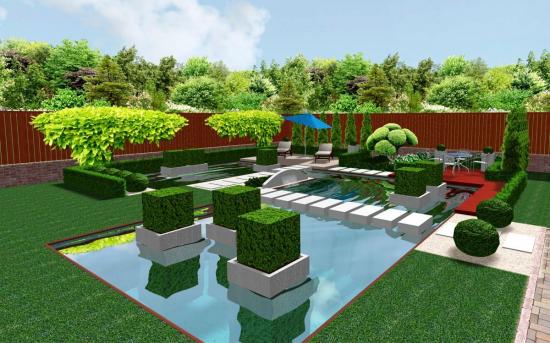
First of all, it is recommended to plant trees, providing the hole with drainage and fertilizing if necessary. When planting, it is important to focus on the root collar - it should not fall above or below the soil level.
After the trees, begin planting shrubs - starting with the largest. If necessary, tying to temporary supports. It is better to plant hedges along stretched threads.
After the bushes, begin planting perennial flowering, bulbous and climbing plants. The last to be planted are annuals and lawns.
However, taking into account all the costs of time, effort and finances, a novice landscape design master does not gain much. The only thing that is priceless in this case is experience.
Let's watch an interesting video about creating an unusual landscape design on a site:
Types of gardens in landscape design, the most popular styles
At the planning stage of the future garden, the style in which it will be designed is determined. Each of the currently existing styles has a number of features that characterize it.
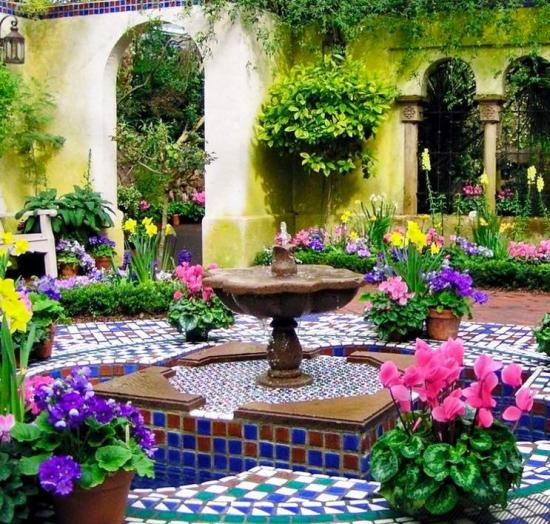
The most popular styles include the following.
| Alpine | The mountain garden is easy to maintain and picturesque. It is characterized by relief, an abundance of stones, the absence of fences and gazebos on depressions. And of course, alpine slides with perennials. This style is characterized by planting plants in islands, alternating monocultural groups with polycultural ones; details of vertical gardening will also not be out of place. |
| English | Appeared in England at the beginning of the 18th century. It is distinguished by smooth lines and contours, continuity between the house and the garden, stone-paved paths, vertical landscaping, a large number of perennials and ponds that look similar to natural ones. The main feature of the style is the desire for naturalness. Among the architecture there are stone or wooden benches and statues. Among the flowers, greenery with white, lilac and crimson buds predominates |
| Dutch | It is distinguished by a parterre lawn, a predominance of shrubs and flowers, hedges, mixed borders along the paths and funny figurines.Particularly popular greenery in this style are bulbs (lilies, tulips, daffodils), moth, delphinium and foxglove. The main condition of this style is its openness - the hedges are low and not dense, the color scheme is distinguished by bright greens, blue, white and scarlet shades |
| Country or rustic | The basis of which is naturalness, light disorder, gravel paths, fruit trees and garden plots. There are elements of wicker fences, flowers are located not only in the beds. The plants are simple, the decor is represented by a wide variety of elements of rustic utensils |
| Mauritanian | It is distinguished by its splendor and abundance of colors. This style is emphatically closed and is characterized by an abundance of strict geometric shapes and symmetry. Plants are fragrant, both trees and herbs. The site itself is divided into four equal parts by paths and bushes. Greenery is represented by peaches, quinces, roses and fragrant shrubs. The color scheme is represented by rich green, yellow, violet and purple |
| Ecostyle | A fashionable style today, which is based on minimal intervention in nature. All materials used in it are of natural origin, characteristic of this area. The grass is not lawn, but wild, field, paths are lined with stones, trees and shrubs are native to the site where the site is being developed. The design features simple wooden furniture, a canopy and a fire pit. This style is characterized by soft, natural colors. |
Each style is diverse and does not require strict adherence to boundaries, offering a huge number of options for each specific case.
In what case is it more rational to contact a landscape design specialist?
Despite the fact that sometimes, with the right degree of perseverance, you can arrange a site yourself, it is not always possible to do without the help of a specialist.
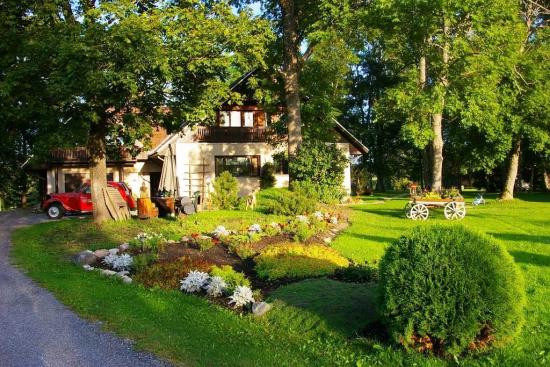
So it will be indispensable in a number of cases:
- If the shape of the site is incorrect, it is quite difficult to draw up a plan and calculate future work in detail; in this case, the help of a specialist is needed;
- Difficult terrain - ordinary people often solve this “problem” with the help of bulk soil, which deprives them of a number of advantages, and most importantly, area;
- High groundwater - which complicates the process of conducting communications and arranging small architectural forms;
- The presence of wild vegetation, with which an experienced craftsman can do something interesting or, on the contrary, recommend removing emergency elements;
- Non-standard arrangement idea.
Of course, you will have to spend money on this, but the result will please you for many years, while unsuccessful arbitrariness can ruin a beautiful site.
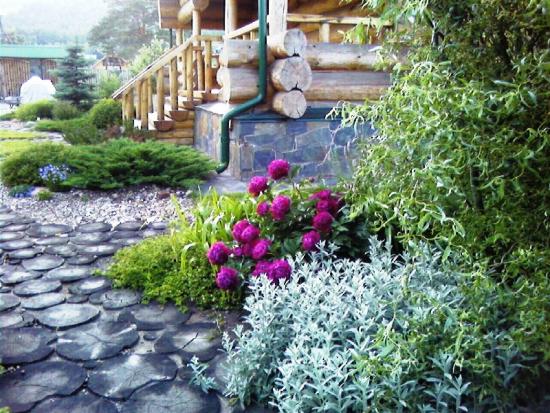
Landscape design is an important industry that is responsible not only for the aesthetic side of parks and gardens, but also for the functional one.
So only a designer can draw up a work plan in which everything will be harmonious and correct.

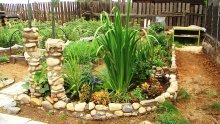
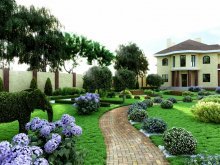



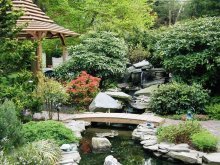
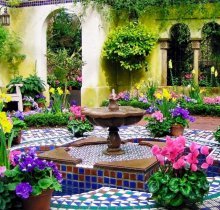
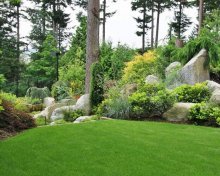

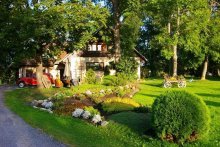
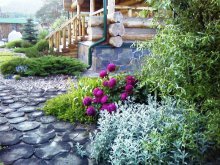
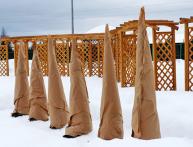
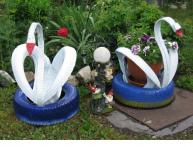
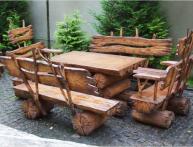
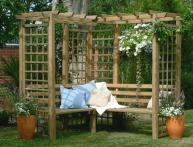
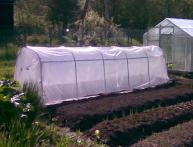
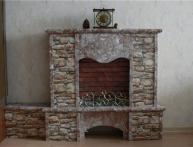
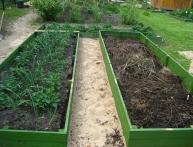
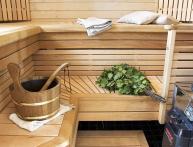
Comments
If on the site you need to plant a flower bed, create an alpine slide and lay a path, then there is no need to invite a landscape design specialist. It is quite possible to do such work yourself.
Landscaping requires an investment of money to make beautiful arches for the vines to create a beautiful fence. I was designing a summer cottage for one person, and I had to buy a lot of materials.
It’s beautiful, of course, when there is order and beauty in the yard, but you still need to learn this business and it’s not a fact that the first time everything will turn out as in the picture. I want to try something small - planting grass and bushes that can be trimmed. And then pick flowers, make a path and perhaps an alpine slide or a small pond.